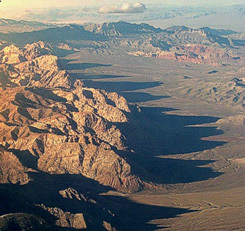
- Capital City:
- Carson City
- Nickname:
- The Silver State / Sagebrush State / Battle Born State
- Motto:
- All for our country
- Statehood:
- October 31, 1864 (36th)
- Origin of State's Name:
- From the Spanish "Sierra Nevada," or "snow-covered mountain range"
- Largest Cities:
- Las Vegas, Reno, Henderson, North Las Vegas, Sparks
- Border States:
- Arizona, California, Idaho, Oregon, Utah
- Land Area:
- 109,806 sq. mi., 7th largest
- State Bird:
- Mountain Bluebird
- State Flower:
- Sagebrush (artemisia tridentata)
- State Tree:
- Single Leaf Piñon and Bristlecone Pine(pinus monophylla / pinus aristata)
- State Song:
- Home Means Nevada
Alert: 2010 United States Census data has been released! The Silver State lead the nation in population growth, increasing 35.1% to 2,700,551 people. In Nevada that works out to be 24.6 people per square mile, ranking Nevada 44th in density.
The impressive population growth means that Nevada will now have one more seat in the House of Representatives due to the new apportionment. (the process of dividing the 435 memberships, or seats, in the House of Representatives among the 50 states based on the decennial census.)
Check back for more information in March!
Nevada's name comes from the Spanish word meaning "snow clad"--a reference to the snow-covered peaks of the Sierra Nevada. The discovery of the Comstock Lode, a massive deposit of silver, in 1859 brought many fortune seekers. Statehood followed shortly afterwards in 1864, when Nevada was admitted as the 36th state. Nevada is in a mountain region that includes semiarid grasslands and sandy deserts, and is the most arid (dry) state in the nation. Like oases in the desert, Nevada's two main cities--Las Vegas and Reno--attract fortune seekers from around the world hoping to strike it rich in the many casinos located there. The capital is Carson City, and the state flower is the sagebrush.
Liberace Legacy
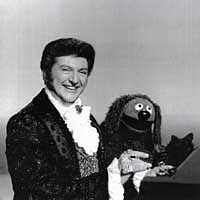
Pianist Liberace, also known as "Mr. Showmanship," set the standard for the glitz and glamour that symbolizes Las Vegas. His flamboyant style, musical talent, and love for entertaining made him a favorite in live performances, on television, and in recorded music. He had fans worldwide and went out of his way to tailor performances for them. By the time of his death in 1987, he had become an American icon of popular culture. His outrageous persona has influenced future performers. Among his costumes, now at the Liberace Museum in Las Vegas, were a fur King Neptune costume; a red, white and blue hot pants costume; and one of his favorites called the "lasagna" costume, which features a cape that fanned out when he spun around.
Born in 1919 to musician parents, Wladziu Valentino Liberace made his concert debut at age 11 as a piano prodigy in his hometown of Milwaukee. At age 16, he appeared as a soloist with the Chicago Symphony Orchestra. While broadening his classical career, Liberace realized that he was confined to a limited audience by concentrating on classical music. At 21, he was determined to become the world's most versatile and entertaining pianist.
After watching a movie about Frederic Chopin in 1945, Liberace made the candelabra his symbol, always on his piano during performances. Within a few years, he had become an established nightclub and hotel performer. He considered his first Las Vegas engagement in 1944 at the Last Frontier Hotel as the start of his career. After his first week at $750, his salary was doubled. Liberace opened the Rivera Hotel in 1955 as the highest paid performer at $50,000 a week. He also introduced Barbara Streisand in her Las Vegas debut.
Liberace's television career began in 1952, as a summer replacement for the Dinah Shore Show, followed by his own live program, which debuted in Los Angeles as a one-half hour weekly. By 1954, The Liberace Show was syndicated and televised in 217 U.S. cities and in 20 countries. Liberace read his own thousands of fan letters, and it is from the public reaction gleaned from those letters that he tailored his performances to better please his audience. He also began his tradition of philanthropy during the 1970s. He established the non-profit Liberace Foundation for the Performing and Creative Arts in 1977, which has provided millions of dollars in college scholarships. Since Liberace Museum opened in Las Vegas in 1979, Visitors from all over the world have come to see its collection of his costumes; pianos, including a rhinestone and a mirrored Baldwin; cars; jewelry; and furnishings.
Nevada Aviation
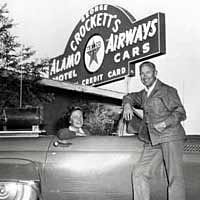
The impact of the postwar travel boom in the United States was nowhere more pronounced than in southern Nevada. Blessed with an excess of money and leisure time, vacationers flocked to the blossoming resort town of Las Vegas. The airlines and hotel-casinos capitalized on the American public's appetite for the town's "fun in the sun" offerings. Both industries heavily advertised with joint campaigns of individual tourist packages between specific carriers and ho tels. Since 1960, air travel to Las Vegas and Clark County has increased continually, reflecting the link between the community's growth as a tourist destination and the importance of aviation to that growth. It is this history that the Howard W. Cannon Aviation Museum presents in exhibits at McCarran International Airport and North Las Vegas Airport, as well as a traveling exhibit, a web site, videotapes, and publications.
Re-Discover Nevada 2000
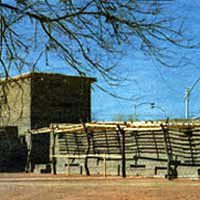
This project highlights six Nevada "territories" through words and images: Reno/Tahoe Territory which borders the scenic eastern slope of the Sierra Nevada mountain range; Las Vegas Territory, home to the most exciting city in Clark County and world-renown for its gambling and entertainment; Pony Express Territory, home to Great Basin National Park and U.S. Highway 50, the Loneliest Road in America; Cowboy County, famous for trailblazers, wagon trains, cattle drives and poetry gatherings; Pioneer Territory, the south central heartland of Nevada and home to the newly designated Extraterrestrial Highway; Indian Territory, a territory without geographic borders which celebrates the ancient and rich cultures of Nevada's native American tribes.
Annual Native American Arts Festival
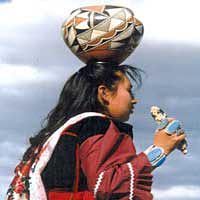
The Clark County Museum hosted the 11th celebration of the three-day festival the first weekend in April 2000. Featured were guest artist demonstrations, dance and music performances, lectures, films, and an outdoor Native American arts and crafts market. More than 1,000 schoolchildren were brought to the festival March 31, and over 7,000 people attended overall.
 Print
Print Email
Email






